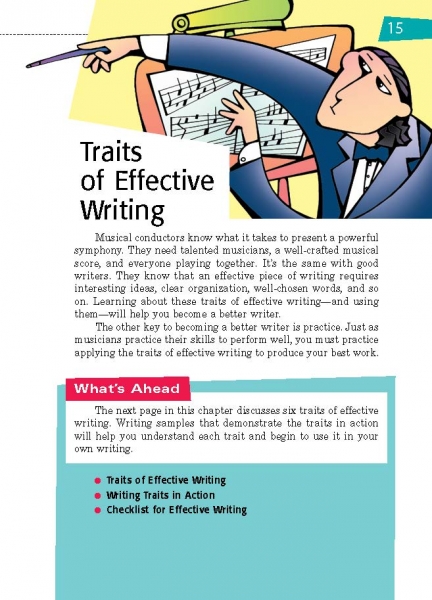Page 015 from

Start-Up Activity
Share an engaging piece of writing with your students. Ask them what they like about it, and list their comments on the board. Their responses may be general—“It’s funny” or “It sounds good.”
Then read the introductory copy on page 15. Point out that learning about the traits will help your students comment more specifically about writing and understand what elements to consider as they develop their own writing. Also note that learning about the traits takes some of the mystery out writing.
The traits include strong ideas, logical organization, appealing voice, original word choice, effective sentence style, and accurate copy.
Think About It
“I tend to write as if I were looking through a movie camera.”
—Patricia MacLachlan

Start-Up Activity
Share an engaging piece of writing with your students. Ask them what they like about it, and list their comments on the board. Their responses may be general—“It’s funny” or “It sounds good.”
Then read the introductory copy on page 15. Point out that learning about the traits will help your students comment more specifically about writing and understand what elements to consider as they develop their own writing. Also note that learning about the traits takes some of the mystery out writing.
The traits include strong ideas, logical organization, appealing voice, original word choice, effective sentence style, and accurate copy.
Think About It
“I tend to write as if I were looking through a movie camera.”
—Patricia MacLachlan




